International Humanitarian Law (IHL)—commonly referred to as the law of armed conflict—establishes the rules that balance military necessity with humanitarian protection. These legal frameworks bind both state and non-state actors, including resistance movements and irregular combatants. Yet, the application of IHL in modern conflicts is increasingly complex, particularly when addressing proportionality, targeting, and legal accountability in environments where combatants and civilians often intermingle.
This article examines the legal status of resistance fighters, the operational and ethical challenges of applying IHL in irregular warfare, and the evolving mechanisms for international accountability. Drawing on historical precedents and current conflicts—including documented violations during Russia’s invasion of Ukraine—it explores the legal and ethical dilemmas that define modern armed resistance.
Disclaimer
This article is intended for informational and educational purposes only and does not constitute legal advice. It should not be used as a substitute for consultation with qualified legal professionals regarding specific situations or legal obligations. The views expressed in this article are based on general principles and publicly available information and do not represent the official position of any organization or entity. Readers are encouraged to seek professional legal counsel for advice tailored to their circumstances.
Defining Key Terms and Principles in Armed Conflict
Combatants, Non-Combatants, and Protected Classes
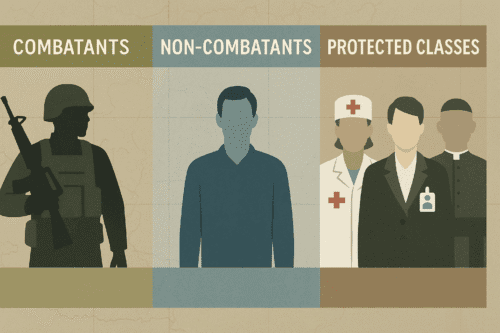
Under International Humanitarian Law (IHL)—also known as the law of armed conflict—individuals involved in warfare fall into clearly defined legal categories. These distinctions are critical for determining rights, protections, and lawful conduct during hostilities.
Combatants – Members of state or non-state armed forces who directly participate in hostilities. They are legally entitled under IHL to engage in attacks against legitimate military targets and, if captured, are entitled to prisoner-of-war (POW) status under the Geneva Conventions. In irregular warfare, resistance fighters must meet specific criteria to be recognized as lawful combatants.
Non-Combatants – Civilians who take no direct part in hostilities. They are protected under IHL and cannot be intentionally targeted. This protection applies even in contested areas, unless individuals directly participate in combat.
Protected Classes – Includes medical personnel, humanitarian aid workers, and religious officials. These individuals must be safeguarded during armed conflicts, and any deliberate attack against them constitutes a grave breach of IHL—potentially prosecutable as a war crime before international tribunals.
Legitimate Military Targets and Dual-Use Infrastructure
Under Article 52 of Additional Protocol I to the Geneva Conventions, a military objective is any object that contributes effectively to military action. Destroying, neutralizing, or capturing it must offer a definite military advantage. These rules are central to International Humanitarian Law (IHL), which governs how and when targets may be attacked.
Examples of Legitimate Military Targets
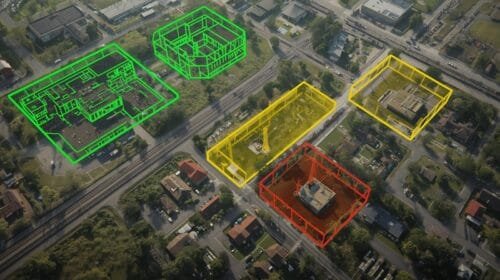
Military objectives often include assets that directly support combat operations. Common examples are:
- Weapons stockpiles
- Communication and command centers
- Military transport infrastructure
These objects are lawful targets because their destruction can reduce the enemy’s ability to fight. However, identifying such targets is not always straightforward.
Civilian Objects and Protection Under IHL
Civilian objects—such as schools, hospitals, and residential homes—are protected under IHL. They lose this protection only if they are being used for military purposes. For example, if a school becomes a weapons depot, it may be targeted. Even then, any attack must meet the proportionality test to minimize civilian harm.
The Challenge of Dual-Use Infrastructure
Dual-use infrastructure presents one of the most difficult targeting decisions in modern warfare. These facilities serve both civilian and military needs. Under IHL, they may only be attacked when the military advantage clearly outweighs the expected civilian harm. Commanders must make this assessment before any strike.
Examples include:
- Bridges and roads – lawful only if actively supporting military operations.
- Telecommunication networks – lawful if providing command-and-control to armed forces.
- Energy facilities – lawful if essential to disrupt enemy military capability.
Specially Protected Infrastructure
Some infrastructure receives special protection under IHL. This includes:
- Water treatment plants essential to civilian survival
- Hospitals, even when housing combatants temporarily
- Religious and cultural sites, unless converted to military use
Attacks on these sites, except under the narrowest legal exceptions, are considered grave breaches of IHL. Such actions can lead to humanitarian crises and prosecution for war crimes in international courts.
Legal Status of Resistance Fighters and Irregular Combatants
The legal position of resistance fighters under International Humanitarian Law (IHL) depends on their conduct during armed conflict. Resistance movements often operate under irregular conditions, but certain rules must still be followed for their members to be recognized as lawful combatants. These rules determine whether fighters receive protections such as prisoner-of-war (POW) status or face prosecution under domestic law.
Resistance Movements Under International Law
Resistance movements—often composed of irregular combatants—may not have formal uniforms or clear chains of command. However, under the Geneva Conventions, non-state armed groups can still qualify for lawful combatant status if they meet specific conditions.
The requirements for lawful combatant status include:
- Carrying arms openly during military operations
- Operating under a responsible command
- Distinguishing themselves from civilians whenever possible
Meeting these criteria is essential. Failure to do so can result in being classified as an unlawful combatant, which removes POW protections and exposes fighters to domestic criminal prosecution. This is especially risky for forces operating in occupied territories or conducting asymmetric warfare against a militarily superior opponent.
Fighters in Civilian Attire and the Principle of Distinction
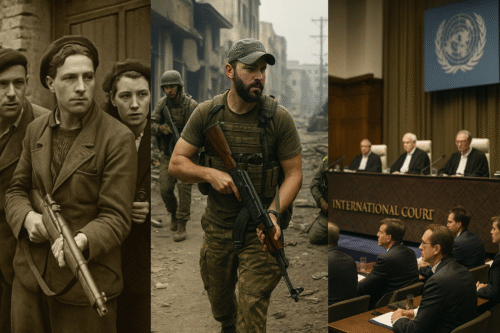
International law allows irregular fighters to wear civilian clothing in certain circumstances, particularly when operating in occupied areas. However, during attacks, they must distinguish themselves from civilians to protect the non-combatant population.
Historical examples highlight the dangers of failing to comply. During World War II, members of the French Resistance faced severe reprisals when they did not clearly separate themselves from the civilian population. Partisan fighters in Eastern Europe encountered similar problems, balancing operational secrecy with the legal requirement to maintain distinction.
This legal obligation remains relevant in modern conflicts. Irregular forces must weigh the tactical advantage of blending in against the legal consequences and humanitarian risks of doing so.
Human Rights, Proportionality, and Civilian Harm in Modern Conflict
Balancing Military Necessity and Ethical Obligations
The principle of proportionality is a cornerstone of International Humanitarian Law (IHL). It prohibits attacks where the expected harm to civilians would be excessive compared to the anticipated military advantage.
Commanders must carefully balance operational objectives with humanitarian obligations. This requires continuous assessment of both the target’s military value and the potential for civilian casualties. Precautionary measures—such as issuing advance warnings when feasible—are encouraged to reduce harm.
Maintaining this balance is not only a legal requirement under the Geneva Conventions but also a practical necessity. Excessive civilian harm can undermine the legitimacy of military operations and erode international support.
Contemporary Challenges
Modern conflicts—especially in urban warfare environments—often blur the line between combatants and civilians. This creates complex legal and operational dilemmas for military planners.
Key challenges include:
- The use of human shields – Armed groups may position civilians near military assets to deter attacks. This tactic complicates lawful targeting decisions and increases the risk of civilian casualties.
- Targeting of dual-use infrastructure – Facilities such as bridges, power plants, and telecommunications systems often serve both military and civilian purposes, forcing commanders to make difficult proportionality assessments.
- Prolonged sieges – Extended blockades can restrict access to food, water, and medical care. Such conditions raise humanitarian concerns and may breach IHL if civilian suffering is excessive.
Addressing these challenges demands not only strict legal compliance but also operational innovation. Militaries engaged in modern conflicts must adapt tactics to protect civilians while achieving legitimate objectives.
Legal Mechanisms for Accountability in Warfare
International War Crimes Prosecutions
International Humanitarian Law (IHL) establishes legal frameworks for prosecuting serious violations such as war crimes, crimes against humanity, and genocide. Institutions like the International Criminal Court (ICC) and ad hoc tribunals handle these cases.
While these mechanisms are effective for certain conflicts, prosecuting irregular combatants presents unique challenges. These include jurisdictional limits, lack of cooperation from states, and difficulties in collecting admissible evidence from active conflict zones.
Accountability is a central pillar of IHL enforcement. Without credible legal consequences, violations risk becoming normalized in both conventional and irregular warfare.
Current Investigations: Russia’s Actions in Ukraine
Russia’s 2022 invasion of Ukraine has triggered multiple international investigations into potential breaches of IHL. Independent organizations such as Amnesty International and Human Rights Watch have documented alleged violations.
Examples of reported war crimes include:
- Indiscriminate shelling of civilian infrastructure, causing significant non-combatant casualties
- Use of prohibited weapons, including cluster munitions banned under various treaties
- Targeting of protected persons, such as aid workers and medical personnel
These documented incidents underscore the importance of international legal mechanisms in recording violations, preserving evidence, and pursuing accountability. They also highlight how IHL enforcement depends on both legal institutions and political will from the international community.
Emerging Trends in Warfare and IHL Adaptation
The character of armed conflict is changing rapidly. International Humanitarian Law (IHL) must adapt to address new forms of warfare that challenge traditional legal frameworks. These emerging trends introduce complex questions about proportionality, distinction, and accountability.
Cyber Warfare and Legal Considerations
Cyber operations against civilian infrastructure—such as hospitals, water systems, or power grids—fall under IHL’s core principles. Any attack that disables essential services must be assessed for legality.
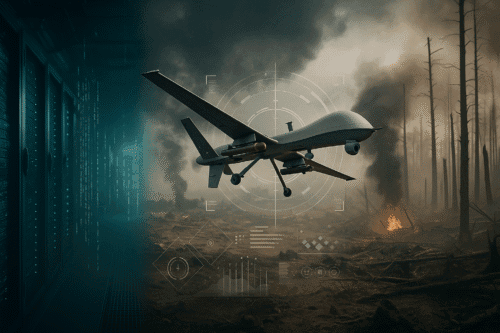
The proportionality principle prohibits cyber actions where civilian harm would be excessive in relation to the military advantage gained. Using malware to disable a hospital’s systems, for example, would likely violate IHL. This is especially true if civilian lives are at risk as a result.
Drones and Autonomous Weapons
The rapid growth of autonomous weapons systems and armed drones introduces new ethical and legal concerns. These platforms can operate with minimal or no direct human control.
Ensuring compliance with IHL—particularly the principles of distinction and proportionality—becomes more difficult without human oversight. Distinguishing between combatants and civilians may be beyond current autonomous targeting technology. This raises questions about accountability when violations occur.
Environmental Damage as a War Crime
Protocol I to the Geneva Conventions prohibits methods of warfare that cause “widespread, long-term, and severe damage” to the environment. Such harm can have both ecological and humanitarian consequences.
Historical examples demonstrate the gravity of environmental warfare. The use of Agent Orange in the Vietnam War caused massive deforestation, long-term soil contamination, and severe health impacts for civilian populations. Under IHL, deliberate environmental destruction can qualify as a war crime.
Resistance Movements, Foreign Fighters, and International Support
Support for resistance movements has always been a politically charged and legally complex issue under International Humanitarian Law (IHL). The type of assistance—whether humanitarian or military—determines its legality and the risks for those involved.
Military and Humanitarian Assistance
Humanitarian assistance—including food, medicine, and medical support—is universally permitted under IHL, even in occupied territories or active war zones. Such aid must be delivered impartially and without favoring any party to the conflict.
Military assistance, however, introduces serious legal and geopolitical complications. Supplying weapons, providing combat training, or offering logistical support to resistance movements must comply with IHL and may be restricted under international arms control agreements. These actions can escalate conflicts and draw external states into legal disputes over neutrality or interference.
For example, covert training missions or arms shipments to irregular forces may be viewed as direct participation in hostilities, potentially making the supporting state a party to the conflict under IHL.
Foreign Fighters and Legal Complexities
The participation of foreign fighters adds another layer of complexity. Historical cases—such as the International Brigades during the Spanish Civil War—show how external volunteers can blur the line between lawful combatants and mercenaries.
Foreign fighters may qualify for lawful combatant status if they are integrated into the armed forces of a party to the conflict and comply with IHL requirements. However, those acting independently or motivated by personal gain risk being classified as mercenaries, which removes combatant protections and can lead to prosecution under domestic or international law.
Modern conflicts, such as those in Ukraine and Syria, have seen thousands of foreign fighters on both sides. These cases raise urgent questions about jurisdiction, extradition, and accountability for potential IHL violations.
The Ongoing Role of International Humanitarian Law
International Humanitarian Law (IHL) remains the central legal framework for regulating armed conflict. It ensures civilian protection, limits methods of warfare, and establishes systems of accountability for violations.
However, the realities of modern warfare—such as urban combat, hybrid tactics, and the use of emerging technologies—continue to challenge these legal principles. Resistance movements and irregular combatants must balance operational effectiveness with compliance. This is a complex task when fighting in environments where civilians and combatants often share the same space.
Adapting Legal Mechanisms to Modern Conflict
As warfare evolves, so must the mechanisms for IHL enforcement. Strengthening accountability systems, expanding the reach of international courts, and improving cooperation between states are vital steps. Without credible enforcement, humanitarian principles risk being undermined by political and military expediency.
Ensuring compliance is not only a legal obligation but also a strategic advantage. Adherence to IHL can preserve legitimacy, maintain international support, and reduce the risk of long-term instability after conflict.
Resources for Further Study
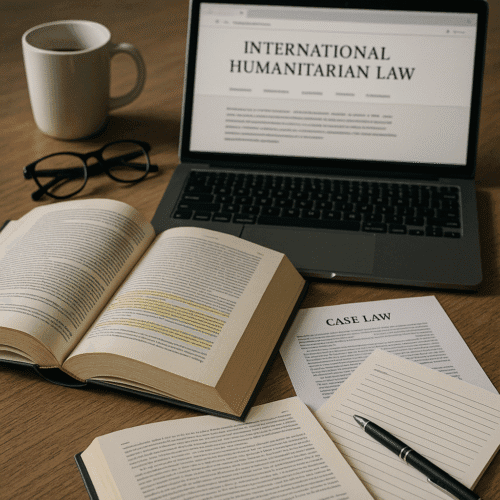
The legal implications of resistance and the enforcement of International Humanitarian Law remain pivotal in protecting those not engaged in hostilities and in placing limits on how wars are fought. For readers seeking deeper insight, the resources in the following section offer a balanced mix of academic works, case studies, online tools, and historical analyses.
These materials provide both foundational knowledge and contemporary perspectives on applying IHL to modern conflicts, resistance movements, and irregular combatants. They serve as a starting point for understanding the complex interplay between law, ethics, and evolving warfare.
Exploring Historical and Case Study References in International Humanitarian Law
Understanding the evolution and practical application of International Humanitarian Law (IHL) requires examining its role in both historical and modern conflicts. Well-documented case studies reveal how legal frameworks are tested, reinterpreted, and sometimes breached. The following books provide a solid foundation for exploring pivotal events, landmark trials, technological challenges, and the legal dilemmas faced by both resistance movements and state actors.
Books
The Law of Armed Conflict: International Humanitarian Law in War – Gary D. Solis
Offers a detailed examination of IHL principles through real-world case studies and practical applications relevant to both conventional and irregular warfare.
Just and Unjust Wars: A Moral Argument with Historical Illustrations – Michael Walzer
A seminal work exploring the ethical and moral considerations of warfare and their intersection with international law.
International Humanitarian Law and the Changing Technology of War – Hitoshi Nasu and Robert McLaughlin
Analyzes how advancements in military technology challenge the application of established IHL principles in modern conflicts.
Academic Insights on International Humanitarian Law (IHL)
Gaining a deep understanding of International Humanitarian Law (IHL) requires engaging with scholarly research that examines how legal principles adapt to new forms of conflict. Academic journals and peer-reviewed articles provide rigorous analysis, case studies, and theoretical perspectives that go beyond introductory knowledge. The following publications explore how IHL applies to modern security challenges, including asymmetrical warfare, cyber operations, and emerging military technologies.
Academic Journals and Articles
International Review of the Red Cross – International Committee of the Red Cross (ICRC)
A leading journal featuring research, case studies, and commentary on the development and application of IHL in armed conflicts worldwide.
Journal of Conflict and Security Law
Focuses on the interplay between international law, armed conflict, and security issues, with articles covering both traditional warfare and modern threat environments.
“Asymmetric Warfare and International Humanitarian Law” – Noam Lubell
Published in the European Journal of International Law, this article analyzes the difficulties of applying IHL to asymmetrical conflicts where one party is significantly less equipped than the other.
“Cyber Operations and the Law of Armed Conflict” – Heather Harrison Dinniss
Examines how IHL principles govern cyber operations, especially when attacks target civilian infrastructure or create cross-border effects.
Online Resources for Exploring International Humanitarian Law (IHL)
The digital age offers unprecedented access to credible information on International Humanitarian Law (IHL). Leading organizations, research institutions, and legal databases now make their expertise available online, providing tools for studying IHL’s principles, application, and enforcement in armed conflicts. The platforms below include official treaty databases, case law archives, educational materials, and up-to-date reporting on global humanitarian law developments. These resources are valuable for researchers, legal practitioners, policymakers, and anyone seeking a deeper understanding of IHL.
Online Resources
International Committee of the Red Cross (ICRC)
Offers guides, treaty databases, case studies, and explanatory materials on IHL, produced by the organization responsible for much of its development and interpretation.
Geneva Academy of International Humanitarian Law and Human Rights
A leading academic hub providing research, courses, and events focused on IHL, human rights, and transitional justice.
United Nations Office of the High Commissioner for Human Rights (OHCHR)
Covers human rights law and its intersection with IHL, including reports on violations in armed conflicts.
International Criminal Court (ICC)
Maintains official case law, indictments, and updates on war crimes and other serious IHL violations under its jurisdiction.
Rule of Law in Armed Conflicts (RULAC) Project
Provides conflict-specific analysis on the application of IHL worldwide, including legal classifications and applicable treaties.
Historical and Case Studies in International Humanitarian Law (IHL)
Examining both historical events and modern conflicts is essential for understanding how International Humanitarian Law (IHL) evolves and is applied in practice. Landmark trials, technological developments, and environmental crises have all tested the boundaries of IHL. These case studies reveal how legal principles work—or fail—under real-world conditions, offering lessons for military planners, policymakers, and scholars. They also show how violations can shape public perception, diplomatic relations, and the future of conflict law.
Historical and Case Study References
“Nuremberg Trials and the Development of International Humanitarian Law”
An in-depth analysis of how post–World War II prosecutions established key IHL precedents, influencing war crimes law for decades.
“The Impact of Drone Warfare on International Humanitarian Law” – Sarah Kreps and Micah Zenko
Explores the legal implications of drone technology, focusing on the principles of distinction, proportionality, and accountability.
The Vietnam War and Agent Orange
A case study on environmental destruction and civilian harm, highlighting how chemical defoliants violated IHL protections and caused long-term ecological damage.
Russia–Ukraine Conflict
Ongoing reports from Human Rights Watch and Amnesty International documenting alleged IHL violations, including indiscriminate attacks and use of prohibited weapons.
The French Resistance During WWII
Historical analyses examining the legal and ethical challenges faced by irregular fighters under occupation, including the risks of failing to distinguish between civilians.
Final Remarks on the Curated Resources
This curated selection offers multiple pathways into the study of International Humanitarian Law (IHL), ethical considerations in warfare, and the role of resistance movements in armed conflict. The resources not only explain the legal frameworks that govern the conduct of hostilities but also explore the moral dilemmas faced by states, organizations, and individuals during war.
By engaging with historical case studies, peer-reviewed research, and current conflict analysis, readers can gain a nuanced understanding of how IHL adapts to technological change and shifting geopolitical conditions. Each resource contributes to a deeper grasp of both the law’s protective aims and its practical challenges in modern conflict.
This collection also underscores the importance of accountability mechanisms—including international tribunals, independent monitoring bodies, and investigative organizations—in safeguarding human rights and enforcing compliance. Whether you are a student, legal practitioner, policymaker, or an informed citizen, these resources provide a strong foundation for studying the critical interplay between law, ethics, and operational realities in contemporary warfare. They aim to support informed debate and promote the long-term goal of strengthening global peace and security.
DISCLAIMER: Links included might be affiliate links. If you purchase a product or service with the links that I provide I may receive a small commission. There is no additional charge to you.

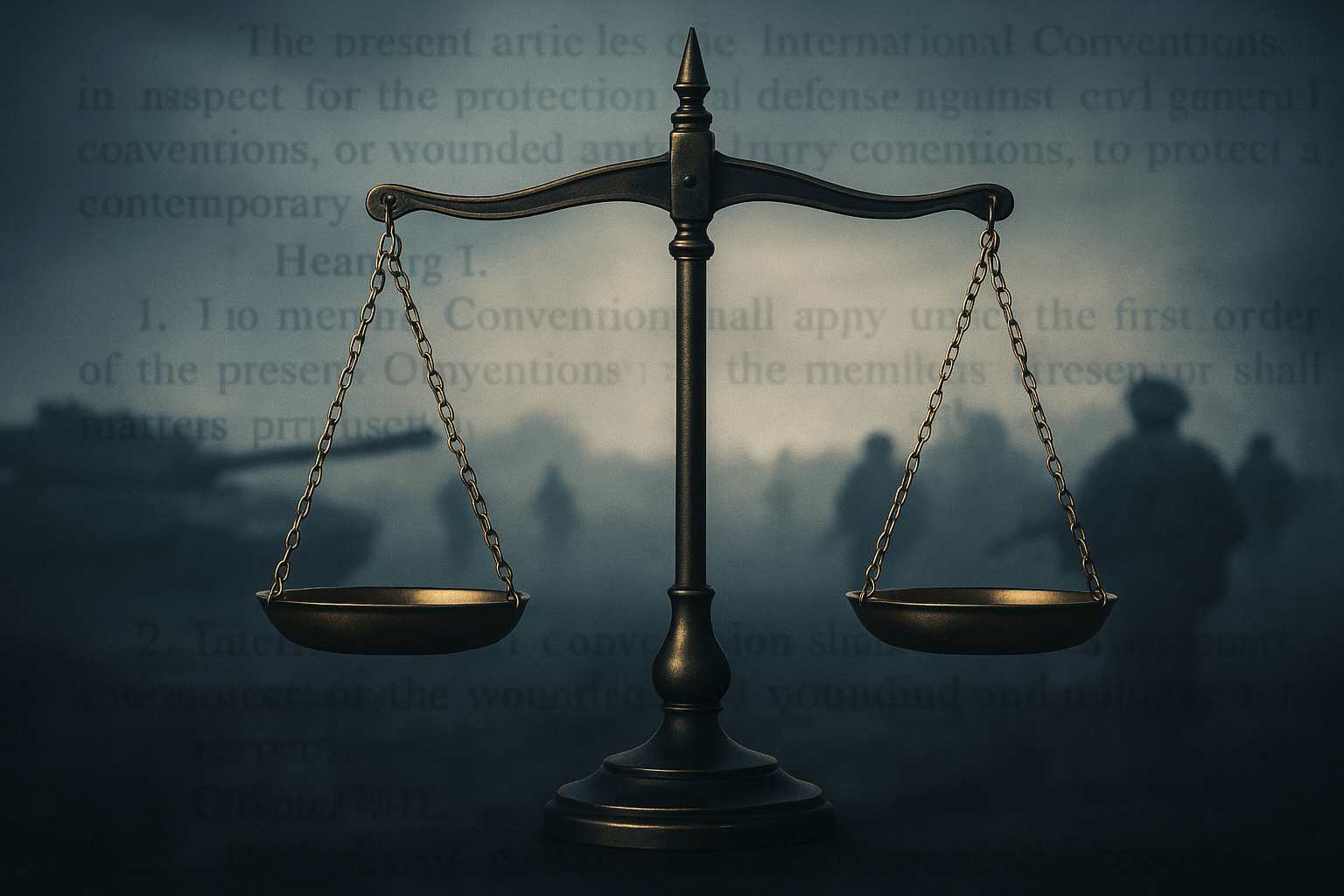



Leave a Reply